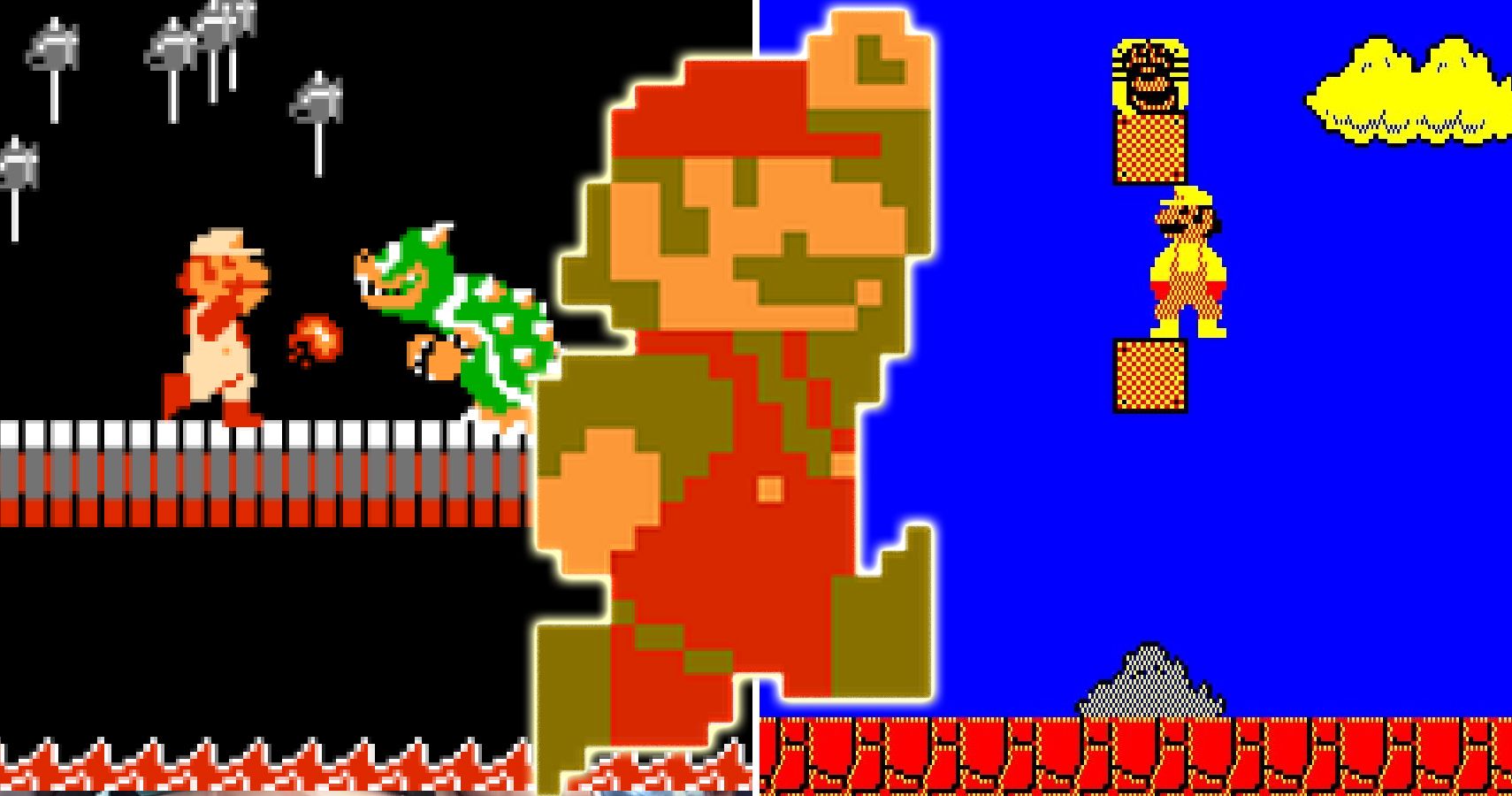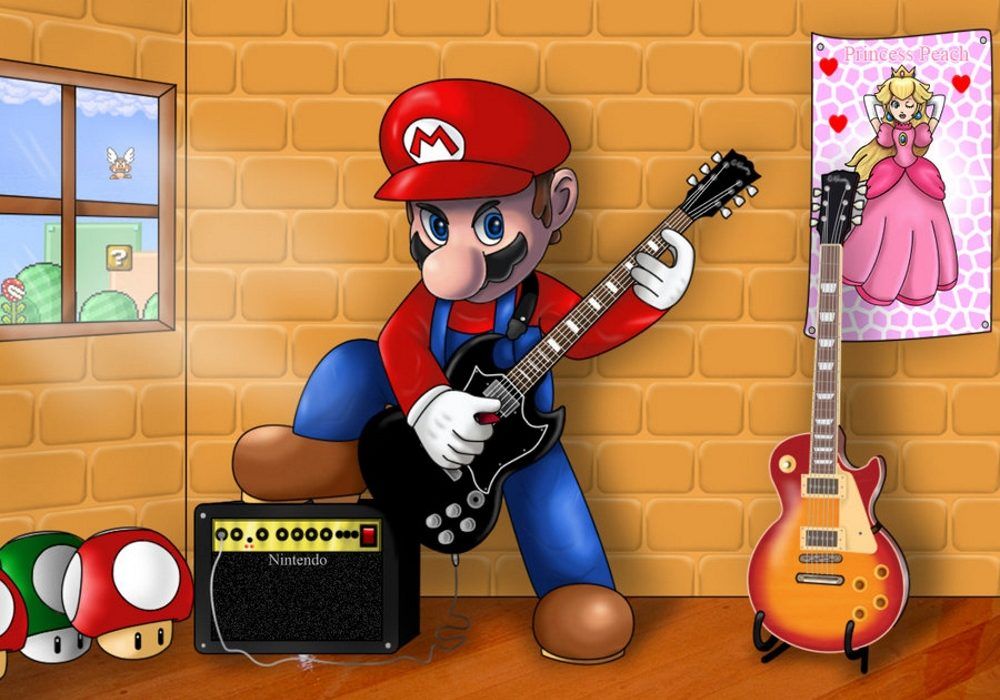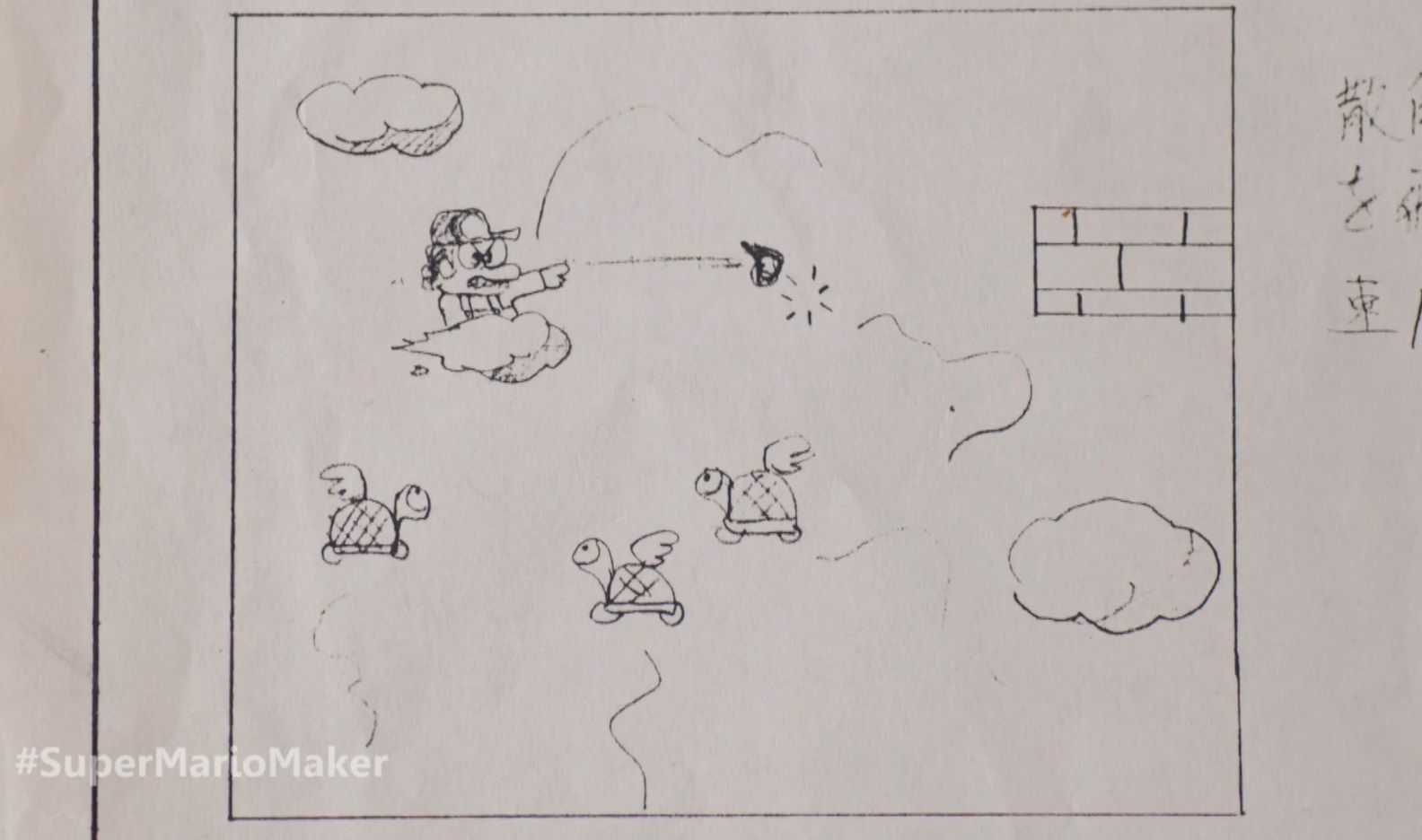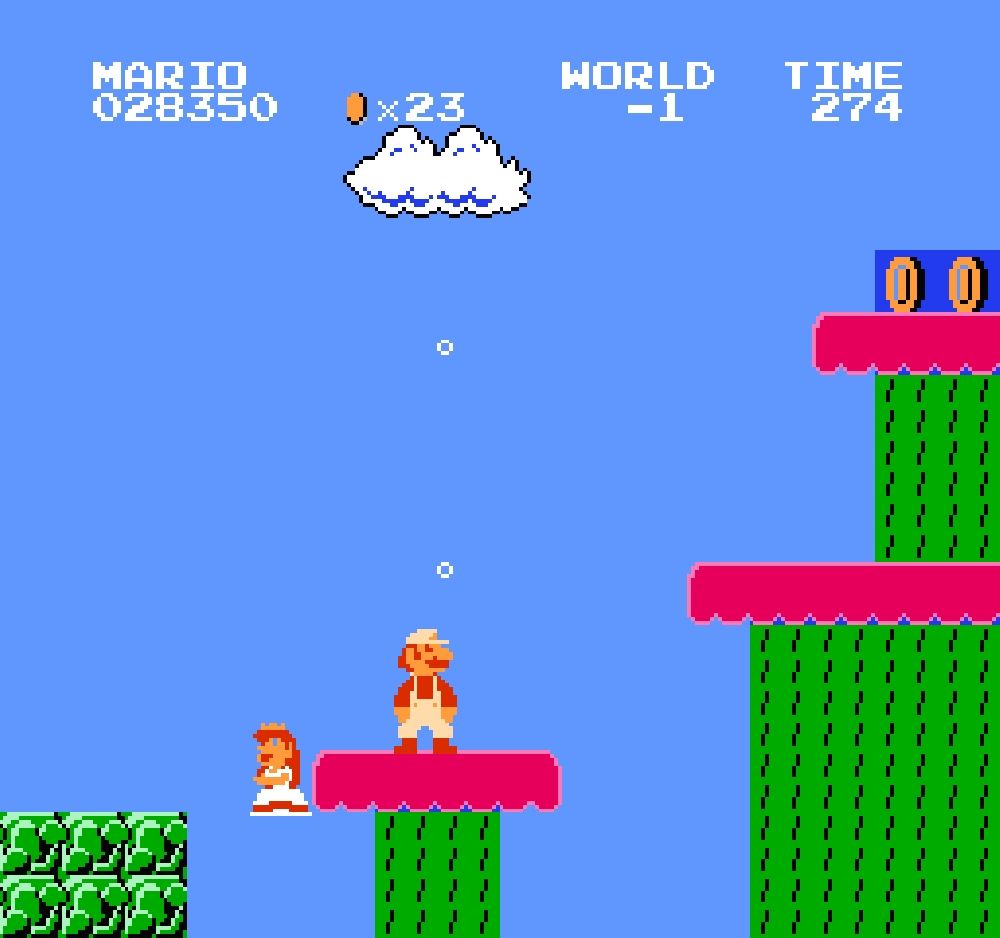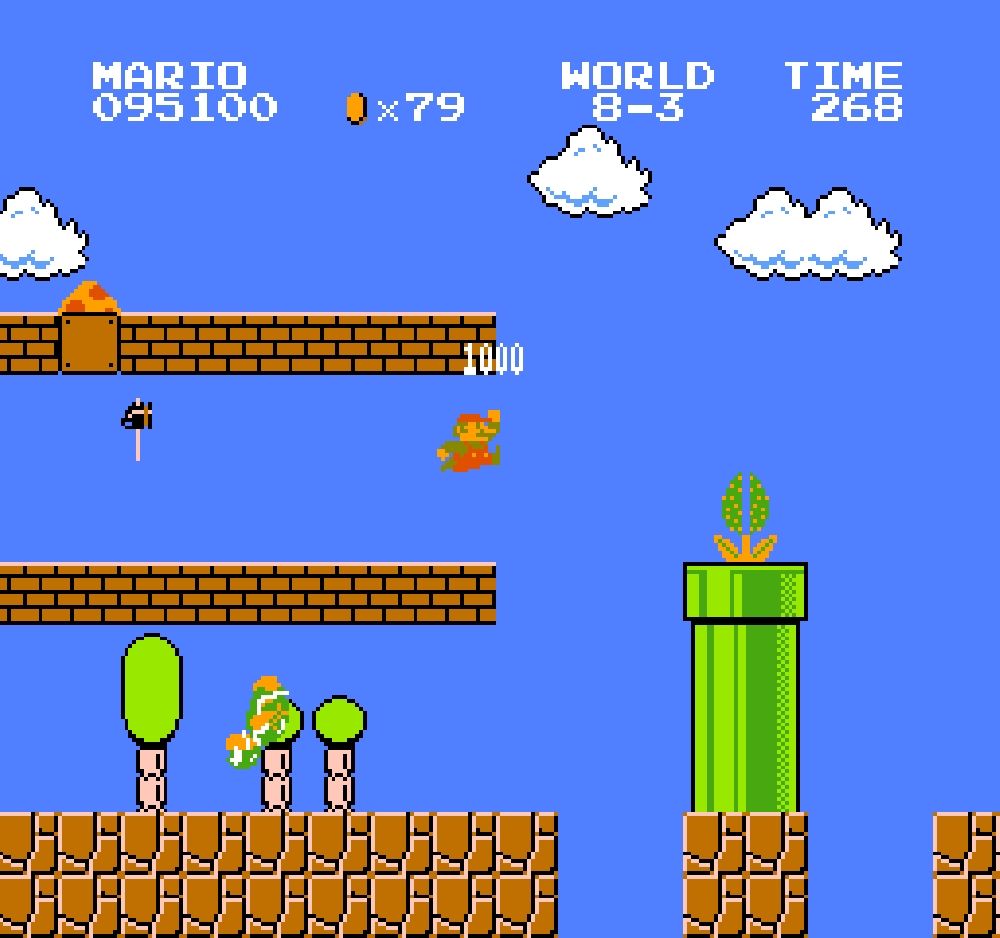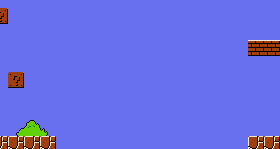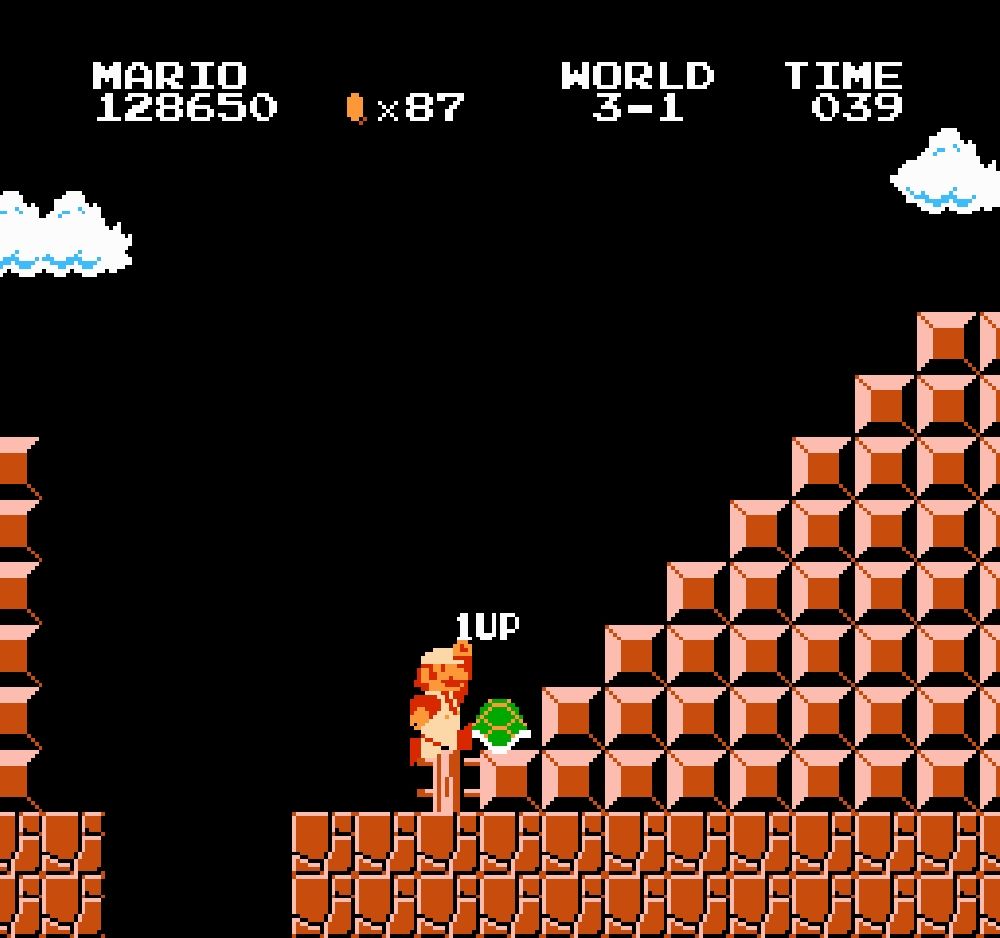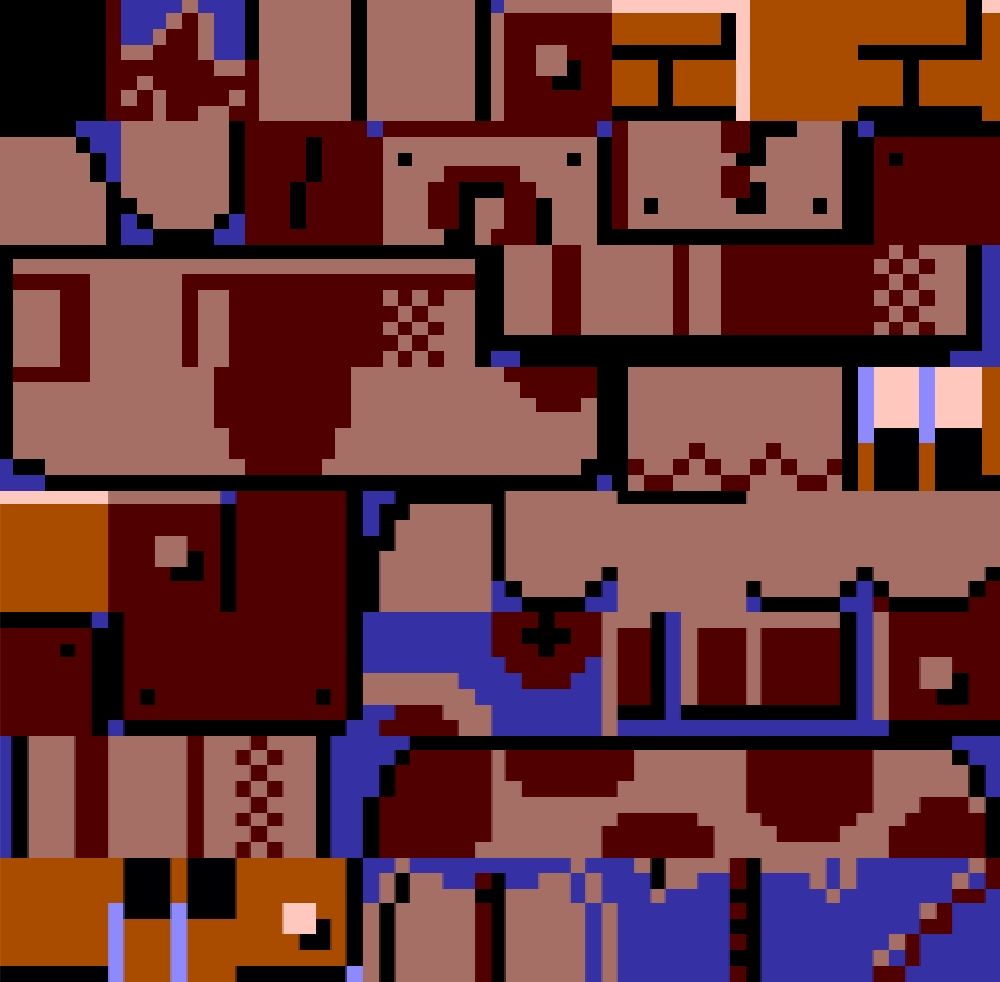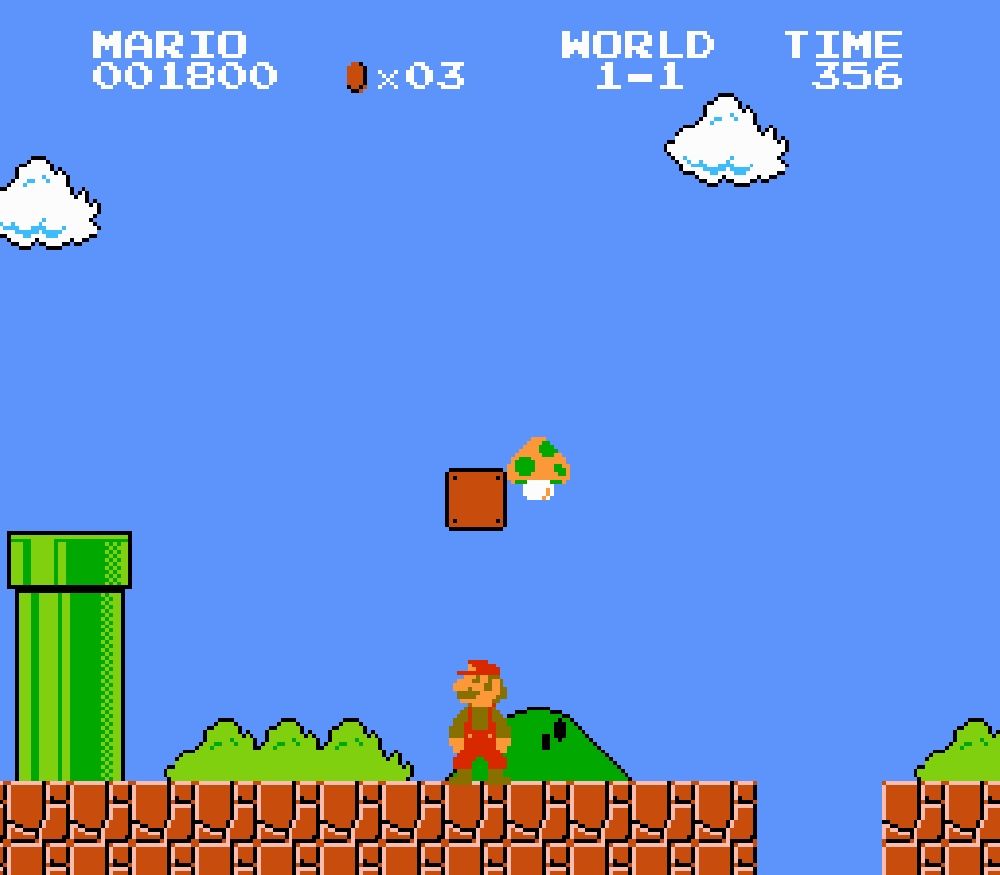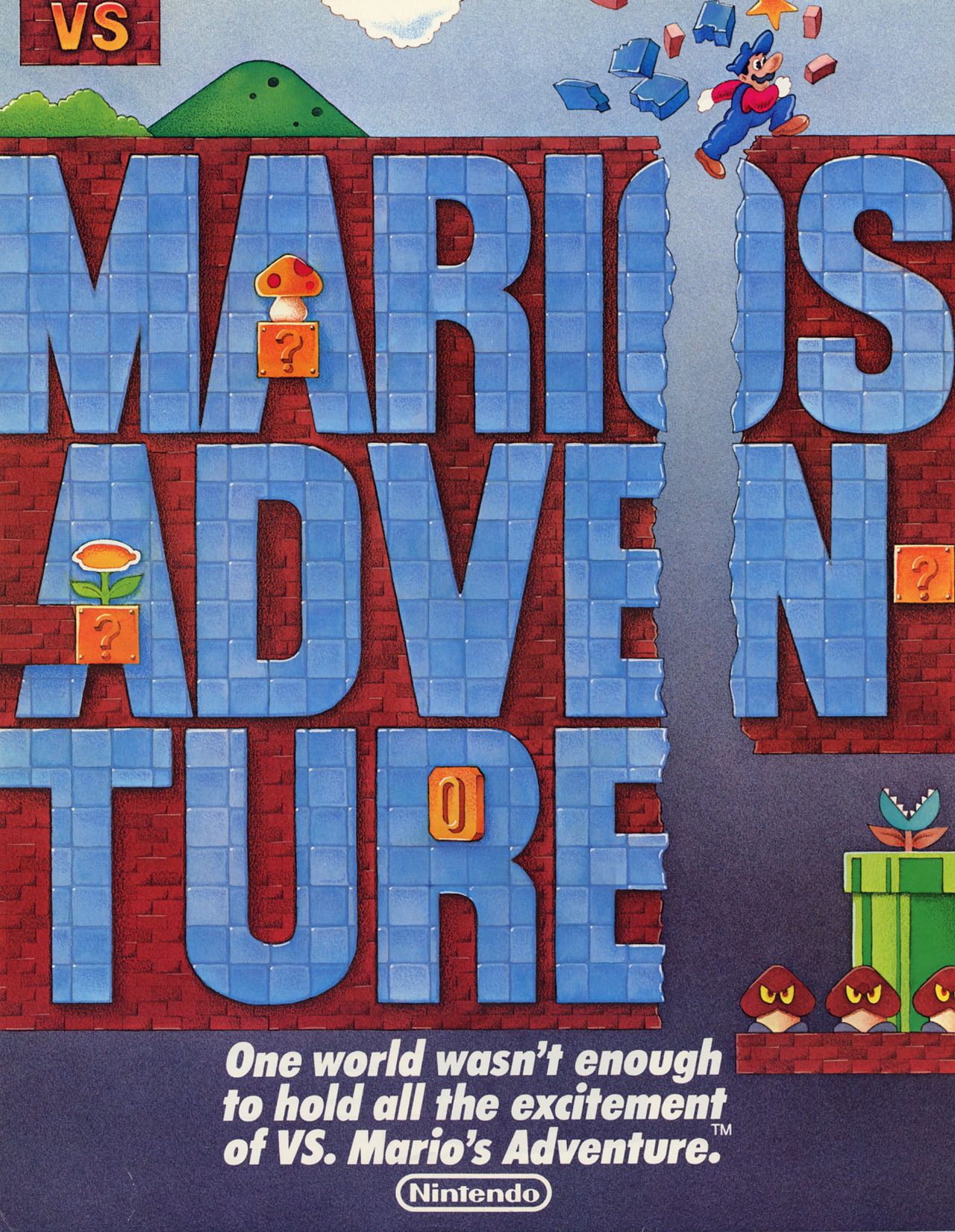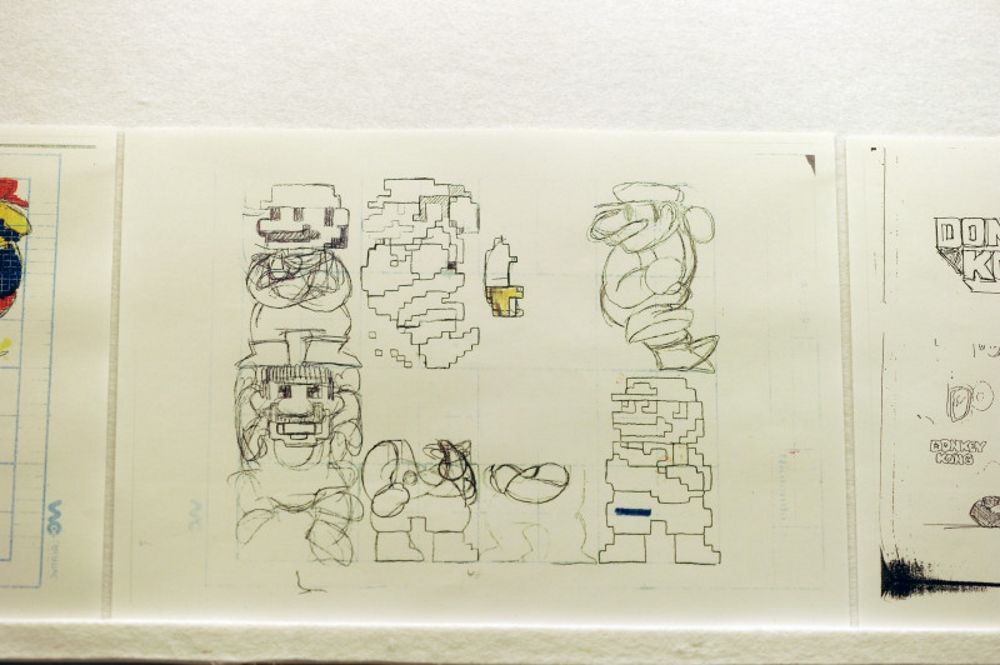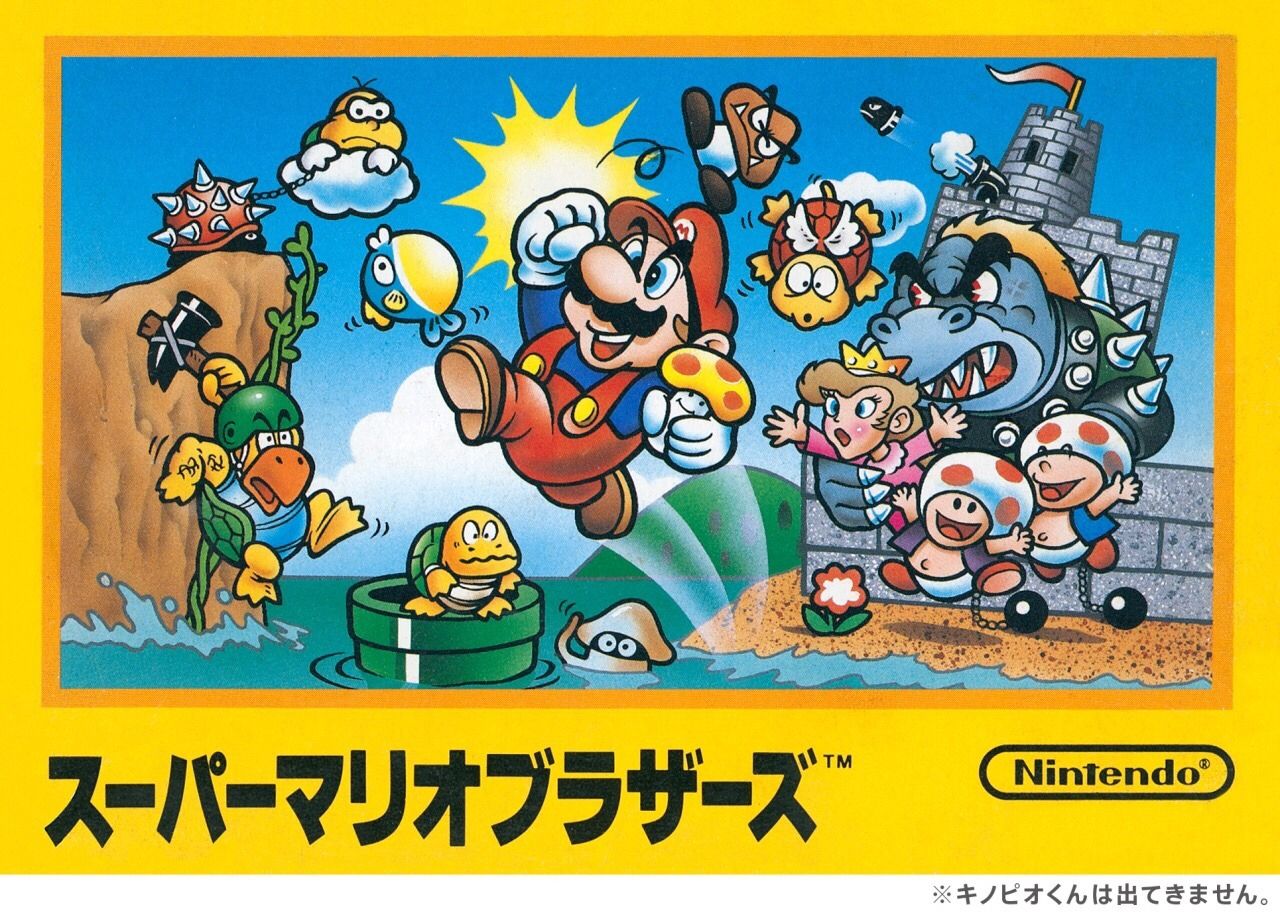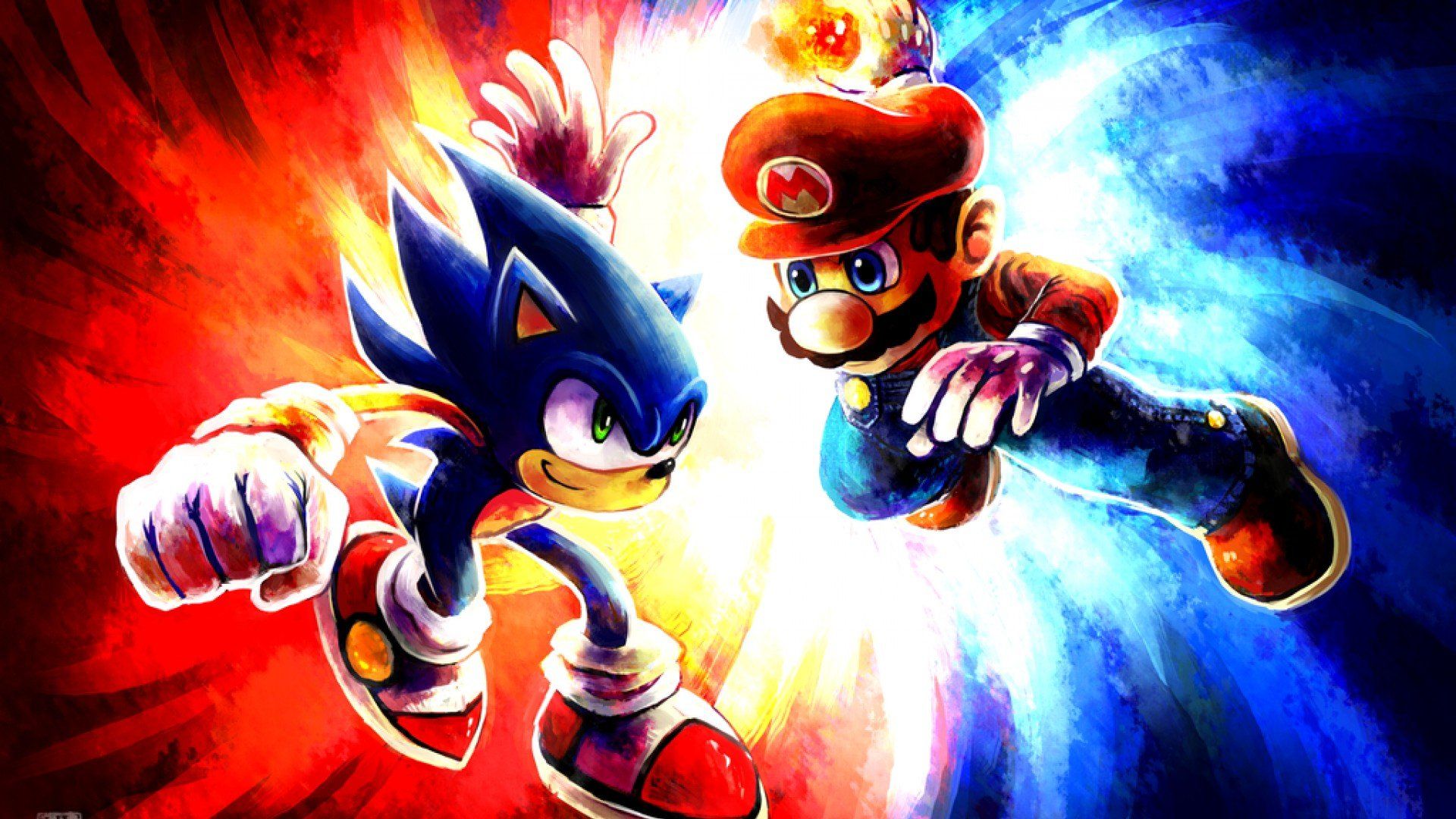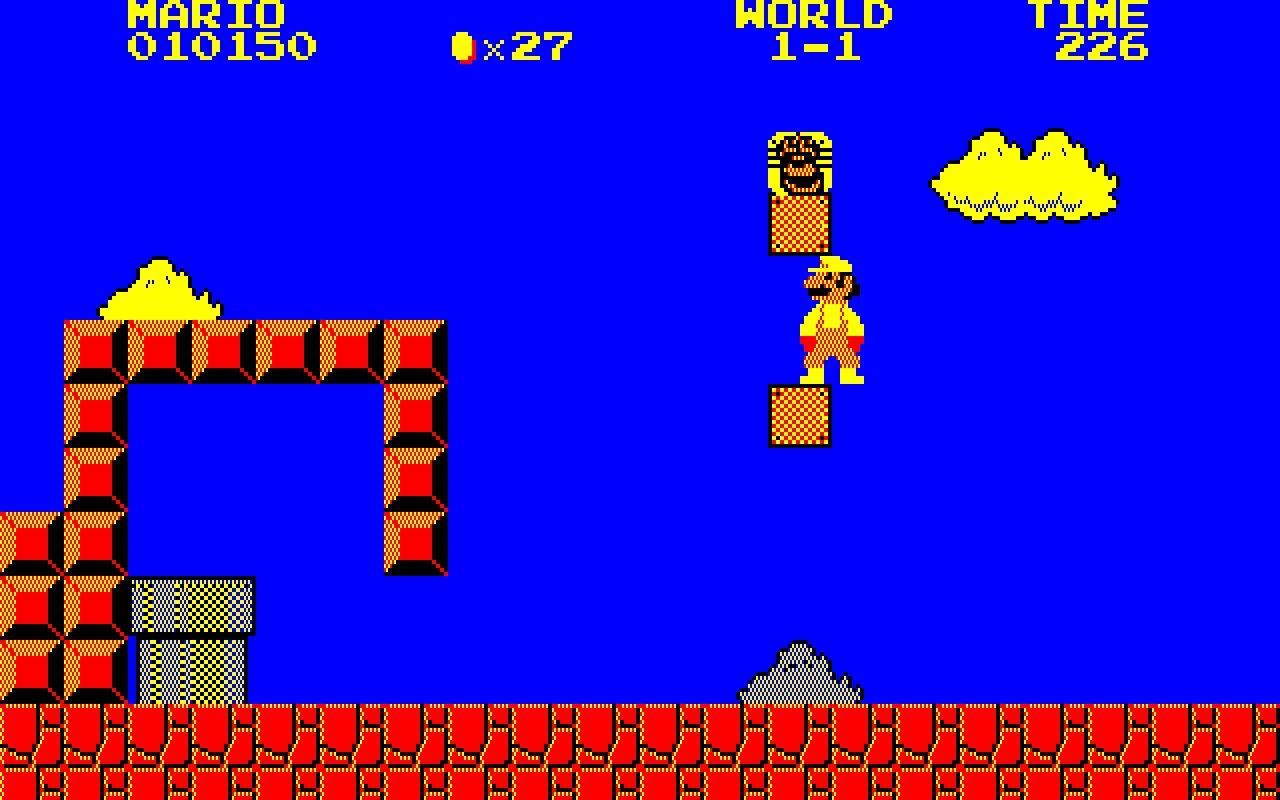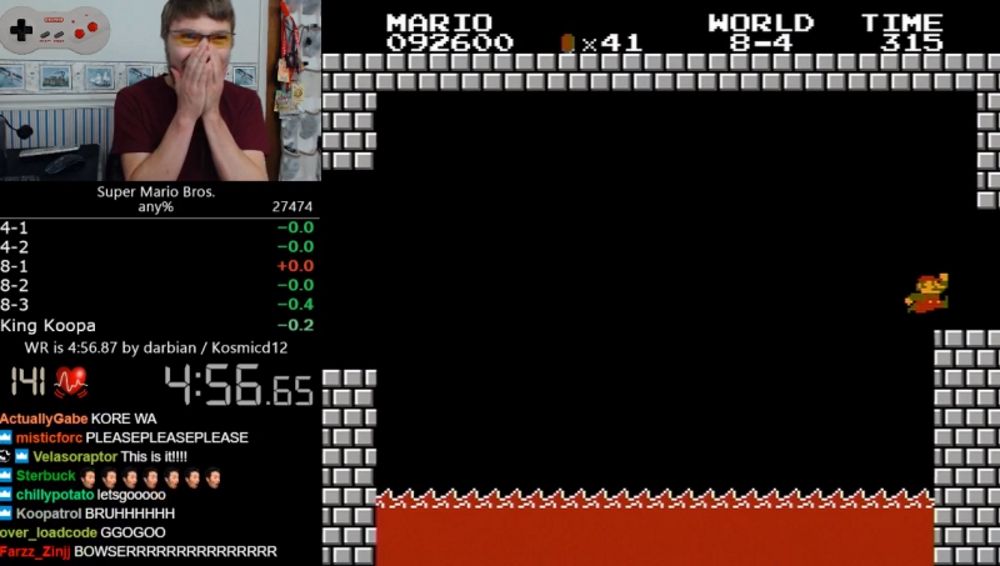It’s Super Mario Bros! It might not be the first official appearance of Mario himself, but it’s the original which set everything into place: the side-scrolling action, the Koopas, the mushrooms, it all started here. It single-handedly sold the Nintendo Entertainment System to North America, and it became the gold standard of its genre for years to come. The game was released thirty-two years ago, which gave everyone a lot of time to study its intricacies and discover every last one of its secrets. So, over three decades later, is there anything else for us to learn about the original Super Mario Bros.?
We think so!
Over the last few years, Nintendo has become a lot more open about how things work inside the walls of a video games giant. Fans of the game have also had time to look over the game’s code to discover some very interesting data. Put these two together, and we have a new, invaluable fountain of knowledge about Super Mario Bros, its development, and the delicate inner working of the game itself. Just below are what we believe to be the fifteen most shocking facts that you are less likely to know about the originator of the best-selling series of all-time. So let’s learn a little bit more about one of the most influential games in history.
15 The Theme Song Has Lyrics
There’s a certain generation of gamer that can hum the theme song of Super Mario Bros. by heart from start to finish. Koji Kondo’s composition is a classic song that will live on forever as one of gaming’s catchiest tunes. Still, did you know that this timeless instrumental track has lyrics? Takashi Tezuka, the game's producer, came up with the accompanying text, and originally wanted it to be printed in the instruction manual. Obviously, this never came to pass, but the lyrics live on. In Japan, they are often performed in concert, and as you can see, it sounds all right in its native Japanese. The English translation to the lyrics are in the video’s description, and quite honestly, I think it’s a good thing that our version is an instrumental.
14 Rejected Arsenal
Interviews with Shigeru Miyamoto, the father of Mario, and Takashi Tezuka, a producer on the game, have given us a lot of insights on the development of Super Mario Bros. As it turns out, Mario’s foray into the Mushroom Kingdom was originally going to be a lot different. Early design documents have shown that Mario was going to have access to one heavy arsenal in his fight against Bowser, with the game focusing more on shooting than platforming. Among the rejected arsenal: a jetpack which would help Mario dash forward, the ability to punch and kick enemies in the face, and most importantly, a freakin’ beam gun to disintegrate Goombas and Koopas alike. For simplicity’s sake, Nintendo settled on “jumping” and “fireballs”. Not as flashy, but very efficient nonetheless.
13 Even The Minus World Is Different In Japan
The Minus World is a famous glitch, accomplished by breaking some specific bricks in world 1-2 and then jumping right through the wall, straight into the warp zone. It’s kinda tricky, but it’s a classic. Anyway, the Minus World, while mysterious, is nothing more than an underwater level with a pipe at the end which brings you right back to the start. It’s an infinite loop which you can only get free from by resetting the game, or by losing all your lives. The Japanese version of Super Mario Bros. features a similar glitch which can be accessed in the exact same way. However, that version of the Minus World is three completely different glitched levels followed by an automatic “game over” once you reach the end.
12 More Of A Headbutt Than A Stomp
Mario’s primary means of offense is his famous jump, and the general rule is that most enemies vulnerable to his stomp will go down as long as they meet the bottom of the plumber’s boots. However, a glitch in the hitbox detection makes it so that as long as Mario is in a descending trajectory when hitting an enemy, the game will register it as a valid stomp. The weird side effect of this bug is that even if it looks like Mario is headed for a face-to-face collision with a baddie, he might still prevail, as long as he is in a falling motion. In some instances, it makes it look as if Mario is headbutting enemies to death. To see the glitch in action, just take a look at this convenient Gif!
11 Even Infinity Has A Limit
Most seasoned Super Mario Bros players know about the famous trick which allows them to accumulate an infinite amount of lives by stomping on a Koopa repeatedly in World 3-1. However, because of the way the game’s program handles the number of lives available, “infinity” for the purpose of SMB is limited to 127. If a player somehow makes it to 128 extra lives, they will get an automatic “game over” the next time they die. This is due to a buffer overflow error. Basically, lives are stocked as a hexadecimal number stored as a byte. Anything above 127 is thus converted to a negative number, which the game assumes means you are dead. With the lives counter switching to symbols after 99, it’s up to you to keep count of how many times you have stomped that darn Koopa.
10 The Double Jump Manoeuvre
The double jump is a gravity-defying and reality-bending manoeuvre which has been featured in some platformers such as Ghosts ‘N Goblins. The Super Mario series has been mostly exempted from that feature, except for Mario’s appearances in Super Smash Bros. Turns out that, thanks to a glitch, Mario could do a double jump way before his role in the fighting series. Here’s how to do it in Super Mario Bros.: as small Mario, grab a mushroom falling from a platform while in mid-air, and keep the A button pressed down. When the transformation to Super Mario is complete, Mario will automatically perform a full second jump. Is it useful? Not really, as it can only be performed in very specific places. But is it cool? Oh yeah.
9 The Only Unused Object Programmed Into The Game
Going through a game’s program will reveal all sorts of things which were left on the cutting room floor. Most games have sprites or objects which worked on by the developers but never finished. More rarely, one can find objects which cannot be seen in the regular game and yet, have been fully rendered, with a completed sprite, a scripted behaviour, and specific sound effects. Super Mario Bros contains only one such object: a 16 x 16 pixels brown ball, similar in look to a larger version of the tip of a flag pole. If placed into an existing level through a third-party editor, it can be climbed by Mario, and it sounds like Mario is constantly hitting his head against something. In the end, it was never officially used, so who knows what it was really supposed to do?
8 The Case Of The Disappearing 1-Up Mushroom
Have you ever collected a hidden 1-up mushroom in a level only for the same location to be empty the next time you play through the game? Have you ever wondered why that happens? The thing is, every first level of a world has a 1-up mushroom which will appear or not depending on several conditions which must be fulfilled. To make sure the 1-Up mushroom is collectible, you must either attain that level from a warp zone, continue the game after a "game over", or collect every single coin in the third level of the previous world. For example, if you want the secret 1-Up mushroom to appear in world 5-1, you must collect every last coin in world 4-3. The instruction manual does not really hint at this, which left players baffled for a long time.
7 The Hammer Brothers In Pursuit
A previous article has mentioned how the Chain Chomps in Super Mario Bros. 3 can free themselves if you dilly-dally (or is it lollygagging?) for too long. However, the Chain Chomps are not the only enemies in the series to lack patience for Mario’s idling. In the original Super Mario Bros., it is the Hammer Brothers which get fed up with waiting for the mustachioed man to make a move. After a minute or so of standing around in front of them, a Hammer Bro will stop their usual “back and forth” routine and come charging straight at you. A regular Hammer Bro is difficult enough to pass, but a charging one can be lethal when you do not expect it.
6 A Completely Different Title
Over the years, Super Mario Bros. has become a household name, but Nintendo of America wasn’t always convinced of the marketing possibilities behind the title. If early flyers for the arcade version are to be believed, the game’s Japanese name was originally going to be translated to Mario’s Adventure. Sure, it’s kinda lame and nondescript, but then again, isn’t Super Mario Bros just as generic when you think about it? Anyway, by the time the game made it to Nintendo’s VS arcade system, the title had been corrected to the one we know and love, and Nintendo has been riding the name ever since. As for Mario’s Adventure, it only lives through scans of the original arcade cabinet art.
5 A Rectangle As A Main Character?
During development, Super Mario Bros. started as a run-of-the-mill Famicom title. It was so generic that the main character was a simple rectangle measuring 16 pixels by 32 pixels. It was obviously a placeholder, but the development team was still unsure of the direction in which to take their game. With the team still in their “shooter with beam guns” phase, Takeshi Tezuka was looking for ways to make their product more distinctive. Eventually, he noticed that the original Mario Bros. arcade game, the one with crabs and flies taking over the sewers of New York City, was doing surprisingly well. Thinking that a plumber is a huge improvement over a rectangle, Tezuka suggested using Mario in their new game to Shigeru Miyamoto, who agreed.
4 Going Out In A Blaze
Super Mario Bros. is known as an NES launch title in North America. In fact, it was so popular that it was eventually packed-in with the system itself. In Japan, the Famicom had already been out for a while when SMB was conceived. More than that, it was going to be the last big game for the Famicom before the launch of the Famicom Disk System, an add-on which was going to prove that rewritable disks were superior to cartridges in every way. Unfortunately, history had other plans for Super Mario Bros. It was so popular that it proved cartridges had plenty of lives left in them, and the Disk System was never released outside of Japan. In the end, cartridges were Nintendo’s bread and butter for another decade and a half.
3 The Direct Inspiration For The Competition
It’s only recently that Nintendo and Sega started collaborating, most notably in the Mario and Sonic At The Olympics series. In the 90’s, the two companies were bitter enemies, and there were no better examples of that rivalry than in the way Mario and Sonic were competing for the public’s attention. Nintendo’s and Sega’s marketing department were doing everything they could to show how different the two mascots were, but behind closed doors, Sonic’s creator had a much different opinion. Yuji Naka, the father of the blue blur, has confirmed in interviews that he was inspired to create his signature game after attempting to beat the first level of Super Mario Bros over and over, and as fast as possible. From his own admission, Super Mario Bros was the direct inspiration for Sonic himself.
2 The REAL First Official Sequel
In North America and Europe, we got Super Mario Bros. 2. In Japan, they got The Lost Levels. But as far as official sequels go, there’s one game that beat them both to the market. In 1986, with Nintendo’s blessing, Hudson Soft released a game called Super Mario Bros. Special, and it was released exclusively for NEC and Sharp computers. The game is basically the first Super Mario Bros., but made tougher. It also features about half as much colours, and no screen scrolling. Instead, each screen has to be loaded as Mario reaches it. It also uses enemies from the series’ past, such as the crabs from Mario Bros. and the barrels from Donkey Kong. The gameplay is too jittery to be a worthy successor to SMB, and it stands out as an abomination in the series, which is why it has mostly been swept under the rug.
1 The Game Is Close To Being Solved
The world record for finishing Super Mario Bros. as quickly as possible, without the help of tools or computers, is 4:56.528. The record has to be calculated to the milliseconds because the difference between a successful run and failed one is often a single frame. With speedrunners being aware of every single glitch available to them, and with most of them being already used by the world record holder, opportunities to improve this time are becoming increasingly rare. According to the record holder himself, a speedrunner who goes by “Darbian”, there are only two more time-saving glitches which can be executed by humans. Even pulling off both of these difficult exploits in a single run would only shave 0.7 seconds off the current record. As it stands, it won’t be long until it is completely impossible to improve the world record at all.

